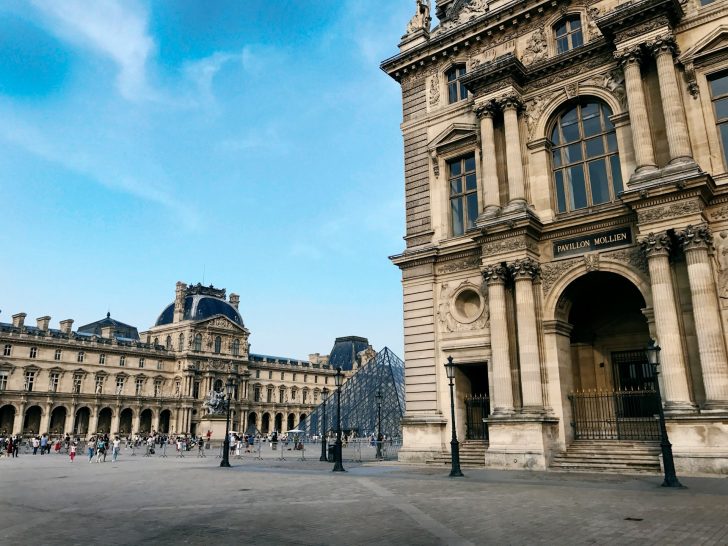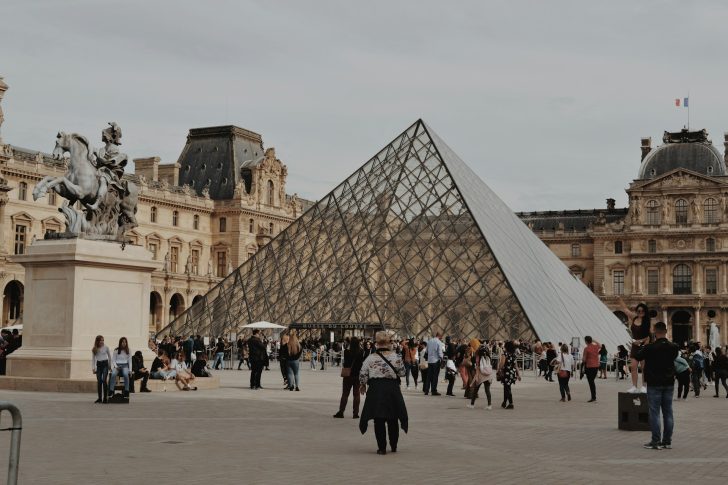The Louvre is more than just the Mona Lisa. Sure, that half-smiling icon pulls in millions, but the real thrill? It is in the shadows, corners, and hidden rooms that most visitors walk past without a clue. The Louvre is packed with odd stories, weird sightings, and strange facts that even some Parisians don’t know.
Step inside, and you are stepping into a 14.5-kilometer maze. That is the length of the Louvre’s galleries. Look at every piece of art for just 15 seconds? You would be there for over 145 hours. And that does not count the time you would spend wondering if someone or something is watching you back.
The Louvre Wasn’t Always a Museum!
Before it held art, the Louvre held prisoners. It started as a medieval fortress back in the 12th century. You can still see the original foundations in the basement: Old, cold stones that once echoed with armored footsteps and iron doors.

Fred / Unsplash / The Louvre was not a museum to begin with. Back in the 12th century, it was a medieval fortress.
Later, it became a royal palace. Kings and queens lived there. Some didn’t leave quietly. Rumor says their spirits still haunt the halls. Think a museum full of paintings can’t be creepy? Think again.
Ghosts in the Galleries
Ask the staff, and some might laugh. But others lower their voice. One of the Louvre’s most famous ghosts is the “Red Man.” He was a butcher, hired by royalty as a hitman. Bad move. The king feared he knew too much and had him killed inside the palace.
Now, people say they see a man in red pacing the halls, especially around the Tuileries. No one stays long when he shows up. If you see him, don’t follow.
Secret Rooms and Locked Doors
The public sees only a slice of the museum. There are dozens of locked rooms and hidden corridors, many used by researchers or security. Some areas are totally off-limits, buried below or tucked away in towers.
One rumor? There is a private vault for the Louvre’s most valuable and controversial pieces. Not everything is out for show. Some works, too fragile or too political, stay hidden.
You will never know which unless you have got the right keycard or a badge with your name on it.
The Missing Paintings
Not everything in the Louvre is what it seems. Some works have vanished—not stolen recently, but lost over time. During wars, pieces were moved, hidden, or swapped. Some were taken by the Nazis during WWII and never returned. A few even showed up years later in dusty attics or shady auctions.

Amy / Unsplash / There is a theory that some art isn’t real. Restorers sometimes discover odd things, hidden paint layers, and fake signatures.
The Louvre guards its secrets tightly. But every so often, something leaks.
The Pyramid Conspiracy
The glass pyramid at the entrance is iconic and suspicious to some. Built in the 1980s, it stirred up whispers. Some say it was designed with 666 glass panes (hint: it wasn’t, but the rumor stuck). Others claim it marks the Louvre as a spot of occult power.
Dan Brown’s The Da Vinci Code made it worse, painting the Louvre as a stage for secret codes and secret societies. That novel may be fiction, but the setting felt real for a reason. The Louvre holds enough secrets to fuel a dozen thrillers.
Strange Artifacts With Stranger Histories
Ever heard of the “Dendera Zodiac”? It is an ancient Egyptian star map, pulled from a temple and brought to the Louvre in the 1800s. Some believe it holds a lost calendar or signs of alien contact. Is that real? No idea. But the design is wild - symbols, gods, stars - carved with serious intention.
Then there is the sarcophagus of a priest that people say gives off “a strange energy.” It might just be the dim lighting. Or maybe not.
